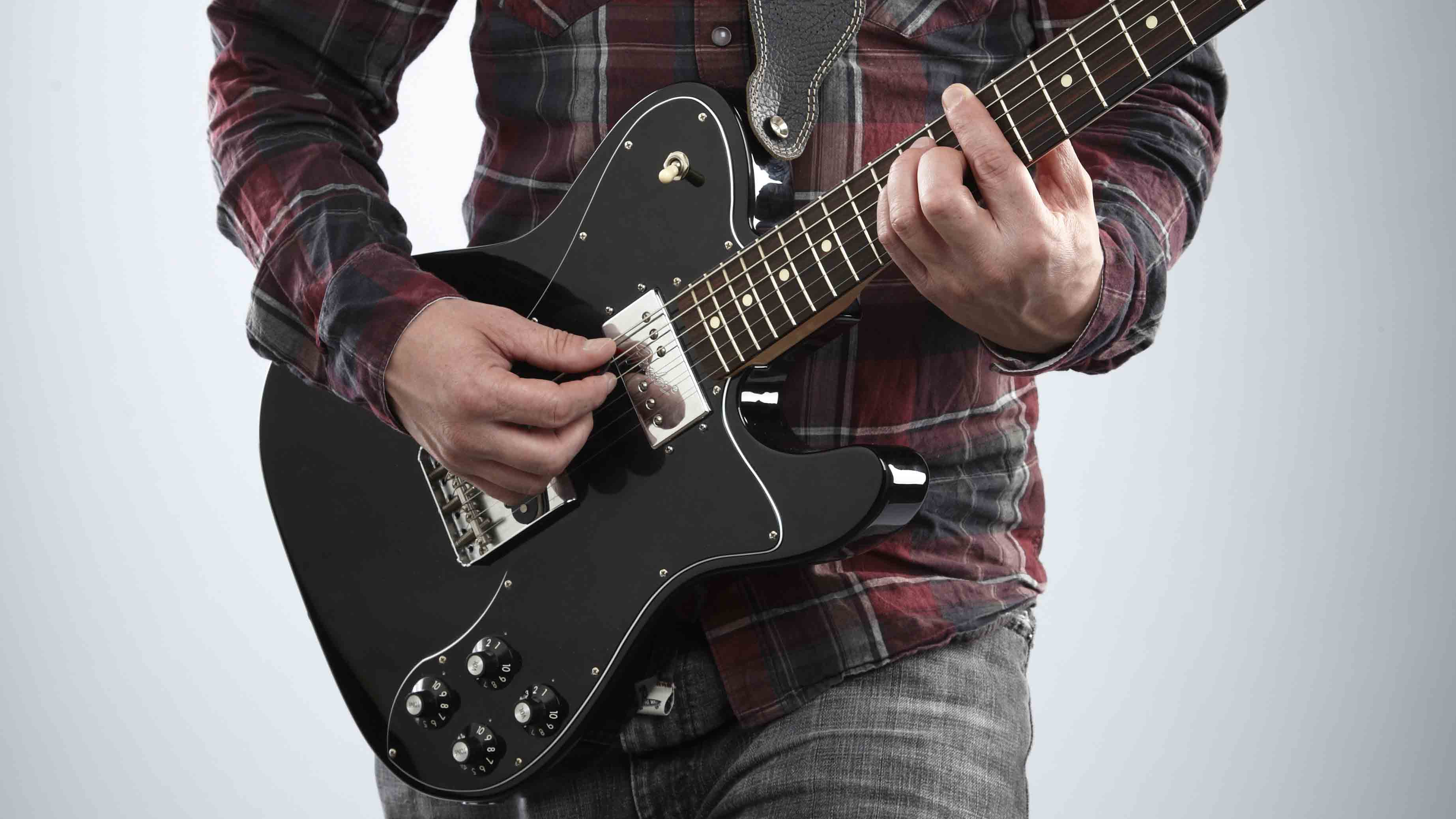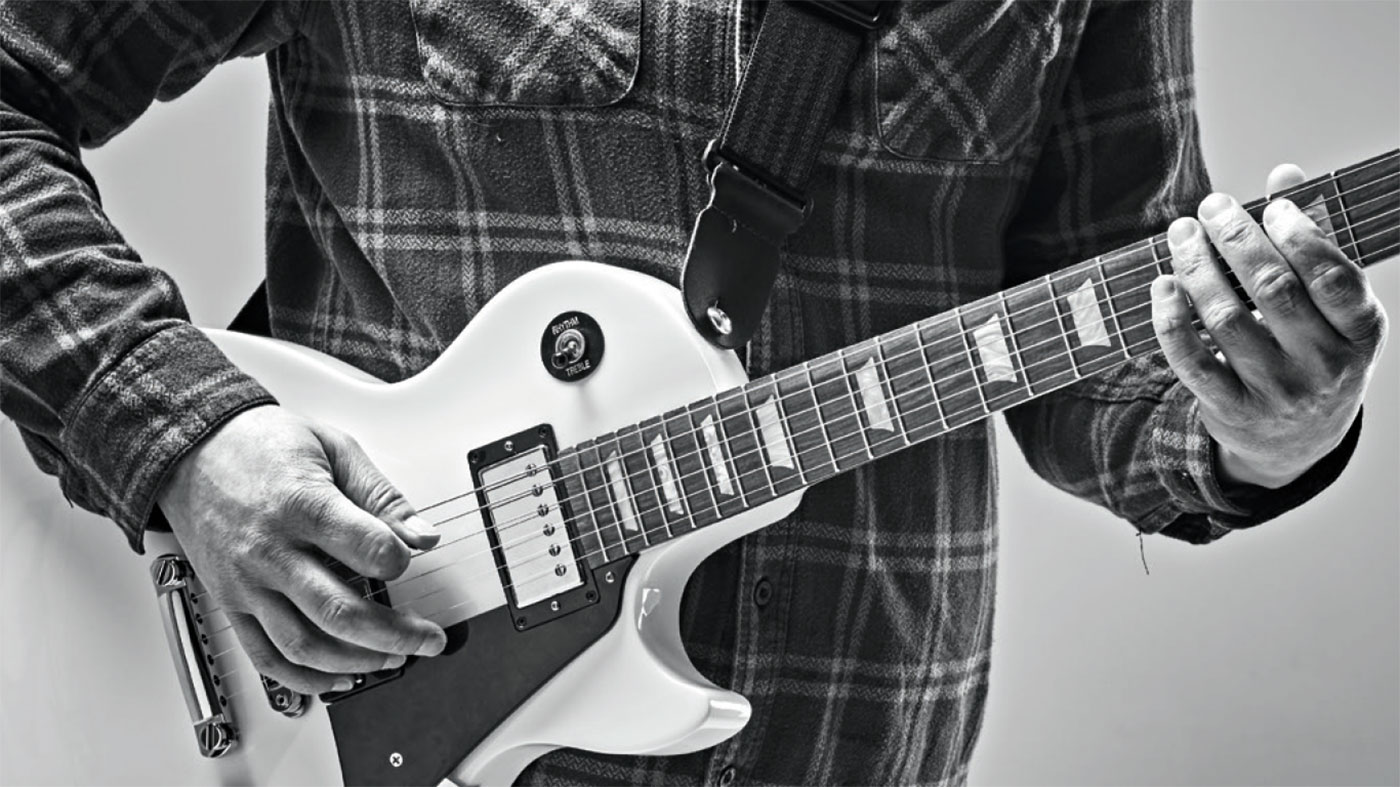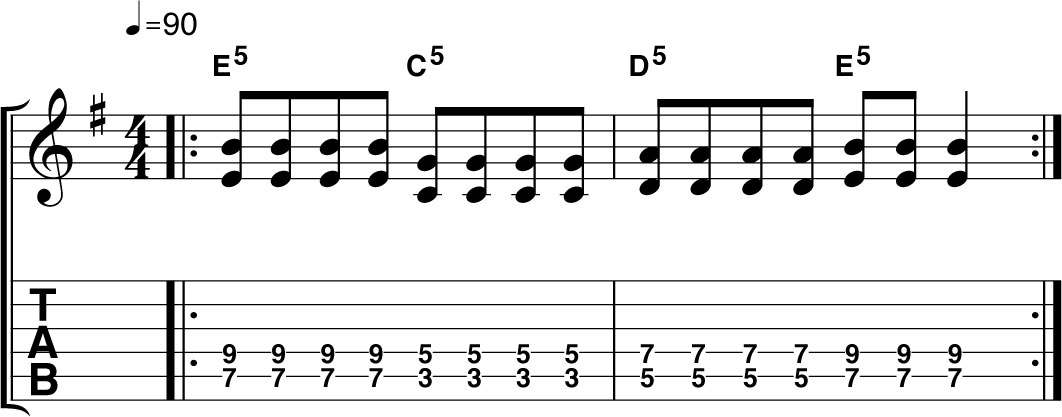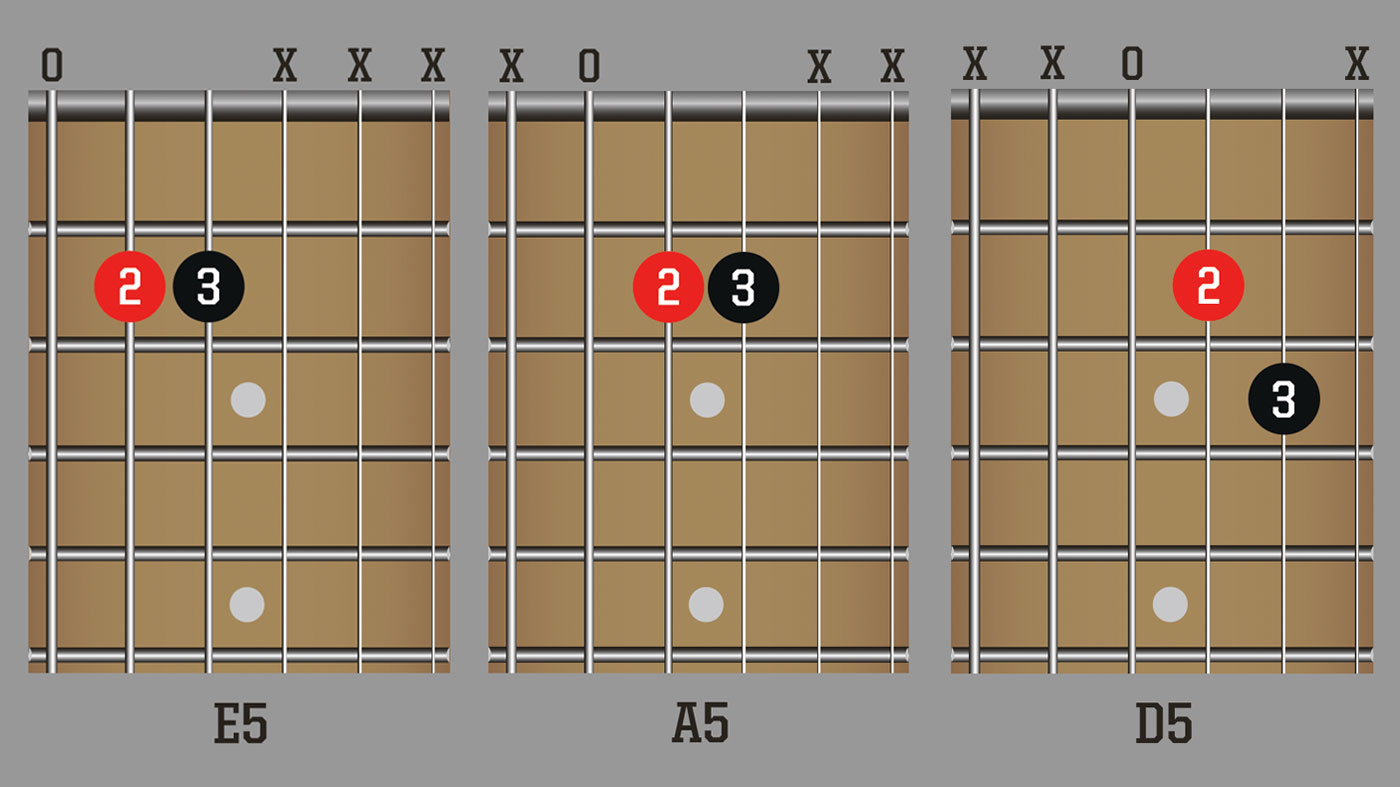Guitar basics: learn to play power chords
Master rock guitar's cornerstone chord with this tab and audio lesson

For big, clear chords that pack a punch, strike a rock pose with this lesson...
“So what’s the deal with power chords – how are they different from other chords?”
A chord is two or more notes played at the same time. Some chords have as many as six notes and use every string on the guitar. A power chord is a two- or three-note chord. They have their name because they have a big, powerful sound.
A power chord is written as a letter name followed by the number five. The first note is the same as the letter in the chord name (this is called the root note).
Example 1’s first chord has an E root note and the second note is five notes above this. In this case this it is a B note. This is why it’s called an E5 chord.
“But I already play chords with way more than two notes, why do these puny two-note chords sound more powerful?”

Well, bigger isn’t always better. Six-note chords can sound messy and lack clarity, especially when the guitar has a distorted tone. This can be good for some styles but not for others. Power chords work well because they provide a big, yet clear sound that’s perfect for heavier styles.
Get the MusicRadar Newsletter
Want all the hottest music and gear news, reviews, deals, features and more, direct to your inbox? Sign up here.
“Okay, okay, enough theory! Where can I hear them?”
They are everywhere. There are very few styles of music that don’t use power chords in one way or another, but they are most popular in rock and metal. One of the earliest examples is The Kinks mega-hit You Really Got Me. You can also check them out on the metal classic Paranoid by Black Sabbath and All The Small Things by pop-punk veterans Blink-182.
“I get it... they are everywhere, so how do I get in on the action?”
It’s easy, all you need are two fingers... and a guitar. The great thing about power chords is that a single shape can be moved up and down the neck. Simply lock your fingers into the power chord shape and shift your hand as a unit to each different fret. Check and make sure that your thumb doesn’t drag behind as this will slow your changes.
“Splendid. I want more, though. What can I do?”
Well, you can make the power chord sound fuller by adding the root note an octave higher. This means you play three strings rather than two. You can either barre your third finger across the two highest-sounding strings or play them with your third and fourth fingers. These three-string chords aren’t necessarily better than the two-string versions. Experiment with them and see which you prefer each time you use them.
Two-note power chords

This chugging progression will help you practise moving around the neck. Strum each chord once until you get the changes up to speed without errors.
Three-note power chords

This example changes both fretboard position and strings. Make sure you lock your hand in the power chord shape even as you move between chords.
More chords

Power chords can also be played lower down the neck in the guitar’s open position. To save you worrying about how you adjust the shape to account for the open strings we’ve mapped them out here for you.
Hopefully you already know open E, A and D chords. Notice how the power chords are made up of three notes from each of the open chords. For example, this E5 shape uses three notes from the open E chord.
Total Guitar is Europe's best-selling guitar magazine.
Every month we feature interviews with the biggest names and hottest new acts in guitar land, plus Guest Lessons from the stars.
Finally, our Rocked & Rated section is the place to go for reviews, round-ups and help setting up your guitars and gear.
Subscribe: http://bit.ly/totalguitar










